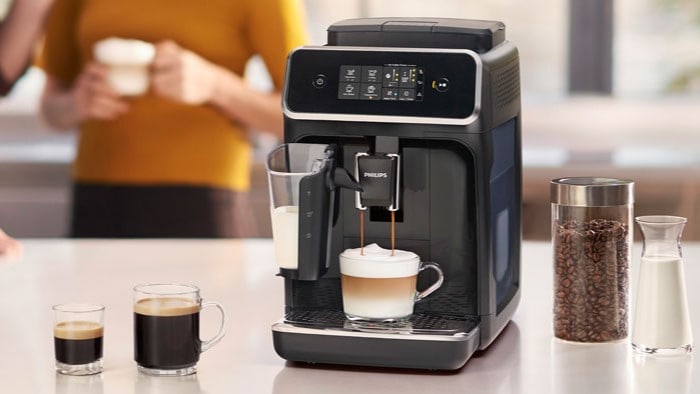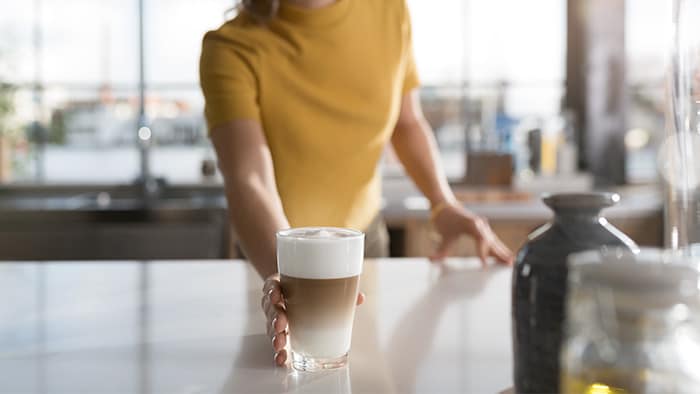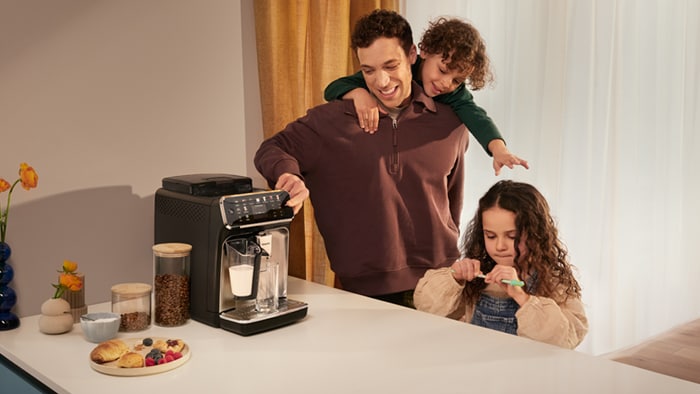Reading time: 5 Min
How to Make Coffee: 6 Ways to Brew the Perfect Coffee at Home
It’s no secret that coffee lovers view making coffee as more of a daily ritual than a mere caffeine boost. So, understanding how to brew coffee is an essential skill. But with so many different ways of making coffee, it can be confusing to know what’s the best way to make coffee at home. No worries – we’ll talk you through six methods. Discover the best temp to brew coffee at, how much ground coffee per cup, and barista tips to ensure delicious coffee with every sip.
There are plenty of ways to learn how to make coffee at home. The method you choose may depend on the equipment you have, the type of coffee you like, and the amount of time you want to spend making coffee. Here are our top methods for how to brew coffee:
1. Automatic drip coffee machine
Fill the water reservoir with cold water from a filter jug, using the markings to measure the water. The standard coffee brewing ratio of coffee to water is about 2 tablespoons for every 180ml of water. Helpful hack: Using whole beans? Grind them as close to brewing time as possible for optimal taste and freshness. Place your filter in the basket. Grind your fresh beans until they’re roughly the size of sand and add to the filter. Turn on the machine and wait for the water to drip through the grounds into the pot. Barista tip: Rinse your filter papers with hot water to remove any chemicals before brewing.
If you want to know how to make good coffee at home that is consistent, easy, and can make multiple servings, this technique is a great one to start with.
Benefits of automatic drip machines:
2. Cafetiere
Some consider a cafetiere the best way to brew coffee. Since it doesn’t use filters it allows coffee grounds to seep in, which can create a fuller, smoother, richer taste. To make coffee this way, bring the water towards a boil and then let it sit for 30 seconds – the ideal coffee brewing temperature is 93°C. Helpful hack: Aim for a coarse grind with the consistency and size of sea salt. Add your ground coffee to the bottom of the cafetiere and slowly pour in the water. Let the plunger sit just above the water for a few minutes. Slowly press it down to push the grounds to the bottom. Barista tip: If you don’t drink the coffee immediately, pour it into another jug – otherwise it’ll continue to brew and become bitter. Advantages Disadvantages
Advantages and disadvantages of cafetiere:
3. Italian moka pot
When it comes to how to make coffee at home, an Italian moka pot works by passing boiling water through coffee grounds at high pressure. Again, the best temp to brew coffee in a moka pot is 93°C. If you want to know how to make good coffee at home with a moka pot, remember to keep your grounds fresh and clean the pot regularly. Fill the base of the pot with filtered water, add the ground coffee into the metal filter basket and screw on the top. So, how much coffee per cup is required for moka pot brewing? A good rule of thumb is to use one and a half tablespoons of coffee per cup. Helpful hack: Aim for coffee grounds slightly coarser than espresso but finer than for a cafetiere. Place the moka pot on the hob and wait until you hear a puffing sound. Once the steam from the pot turns light in colour, remove it from the heat. Barista tip: Don’t tamp the grounds! They should be loosely packed to avoid over-extraction and bitter coffee. Pros and cons of using a moka pot: Pros Cons
What you need
-
- Choose from 12 beverages
- LatteGo milk solution for silky smooth drinks
- Aesthetic black colour
- TFT display for great control
- Perfect drink temperature
-
- The EP4346/70 makes 8 beverages
- Smart LatteGo milk solution
- Sleek black design
- 5 aroma strength settings
- Philips LatteGo 4300 with TFT display
-
Series 3200
Bean to Cup coffee machine
EP3246/70
- Perfect drinks with the Philips LatteGo EP3246/70
- LatteGo technology for the perfect foam
- Silver colour to blend in with kitchen appliances
- Easy touch display
- 12 grinder settings and 3 aroma strength settings
4. Manual espresso machine
A certain level of expertise is required to use a manual machine: you must set the water temperature, clean the portafilter, correctly tamp the coffee and, sometimes, grind the coffee yourself. It can take trial and error to determine grounds that aren’t too coarse or too fine. Likewise, you must tamp the grounds just right to avoid extracting too quickly or not extracting enough. All of this means it’s the best way to make coffee at home only if you already have quite a bit of experience. Helpful hack: For the best results, pre-heat the portafilter by running hot water through it. Benefits of a manual espresso machine
5. Fully automatic coffee machine
A fully automatic coffee machine does as its name suggests: it makes coffee effortlessly at the push of a button, grinds the beans, and brews using the espresso method. Barista tip: In addition to coffee making, some machines use steam to foam milk to make delicious cappuccinos and latte macchiatos. Features and benefits of fully automatic machines:
6. Semi-Automatic coffee machine
A semi-automatic coffee machine strikes the ideal balance between convenience and control. While it automates key steps like heating and pressurising water, it leaves room for you to take charge of the coffee-making process—grinding beans, tamping, and starting the extraction yourself. Features and benefits of semi-automatic machines:
The best way to brew coffee to satisfy your caffeine cravings!
There you have it: how to make coffee yourself. Now that you know the ideal coffee brewing temperature and ratio, you can enjoy delicious coffee every morning.








